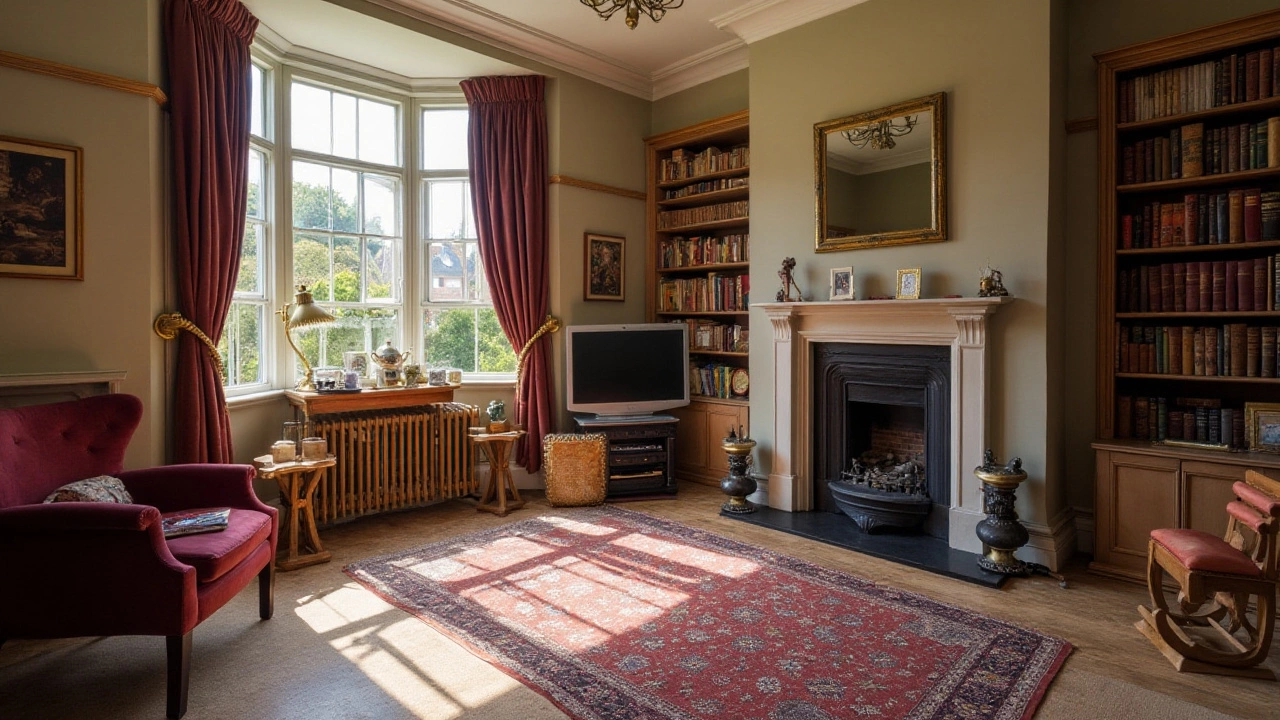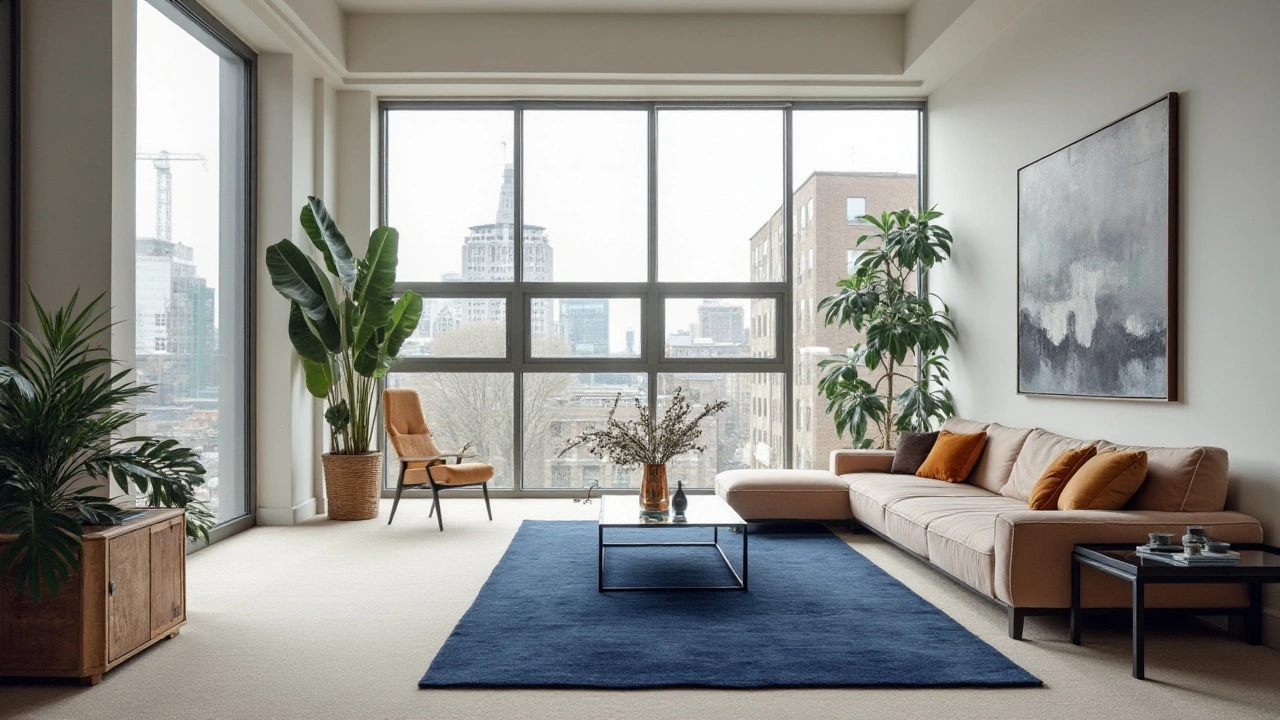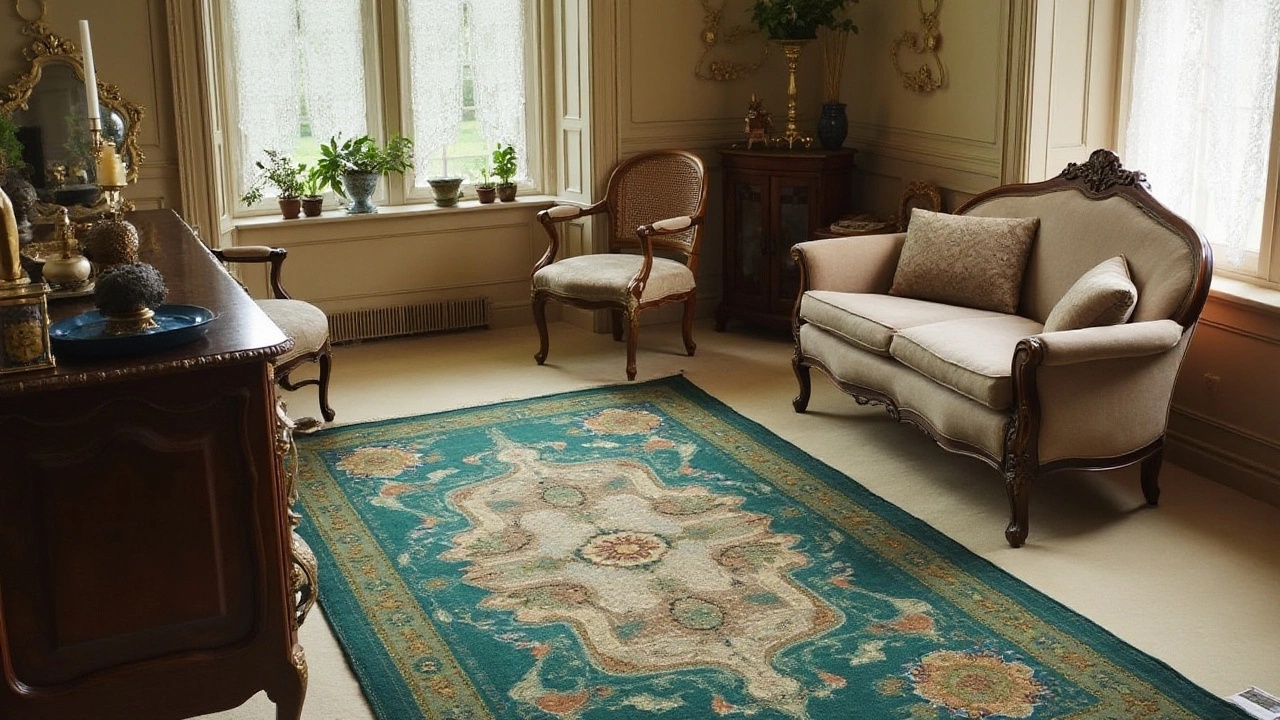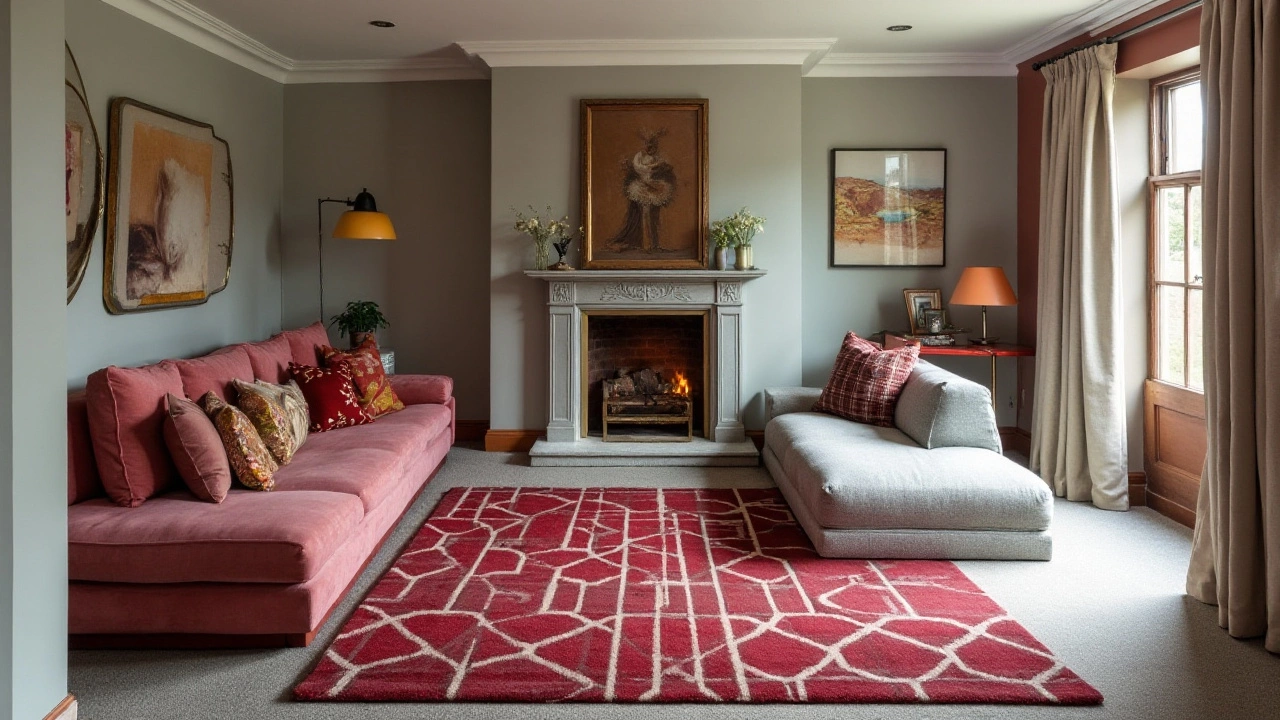Should Your Rug Be Darker Than Your Carpet? Expert Tips and Insights
 Jan, 6 2025
Jan, 6 2025
Choosing between a darker rug and a lighter carpet can feel like a big decision, but it doesn’t have to be overwhelming. Homeowners often wonder how to strike the perfect balance that complements both their personal style and the existing decor of their space.
One of the first things to consider is color theory in interior design. Colors can change the way we perceive a room’s size and they play off light in fascinating ways. Dive into the world of tints, shades, and tones, and see how they can transform your living space.
But it’s not just about color. The size of your room and its lighting conditions can heavily influence whether a darker or lighter rug would work better. A darker rug might create a cozy, intimate feel, while a lighter one could make a space appear larger and more open.
Create the right contrast and ensure your room has focal points that draw the eye. The right choice of rug can anchor your furniture and define living areas, turning simple decor decisions into statements of style.
- Understanding Color Theory in Interior Design
- Impact of Room Size and Lighting
- Contrast and Focal Points
- Balancing Styles with Color and Pattern
Understanding Color Theory in Interior Design
Color theory is the heart of interior design, guiding the way we choose and combine colors in our homes. It involves understanding how different hues interact with one another and the emotional responses they evoke. In the context of home decor, particularly with rugs and carpets, mastering color theory can change the play of energy and mood in any room. For instance, warmer colors like reds and oranges are known to stimulate the senses, often creating an inviting atmosphere. Meanwhile, cooler shades like blues and greens can lend a tranquil and soothing vibe, ideal for relaxation areas. Using interior design principles, one can leverage these emotional effects to create spaces that feel harmoniously balanced and purposeful.
Color perception is not just about personal preference; it is also about visual effects. Darker colors tend to recede, making spaces feel more intimate, while lighter shades can open up a room, giving the illusion of space. This is particularly important in smaller living areas, where choosing a dark rug might make the room feel cozy but somewhat smaller. Conversely, a light colored carpet can expand the visual boundaries of a room, making it feel more expansive than it actually is. When selecting a rug, consider the existing color palette and think about how the addition will play into this on a visual level.
Another intriguing aspect of color theory is how complementary colors can create striking contrasts that add depth and interest to your decor. Using a color wheel, one can identify which colors lie opposite each other and use this information to introduce bold, contrasting elements without overwhelming the senses. For instance, pairing a deep eggplant rug with a soft, cream carpet creates a dramatic effect that becomes a focal point in the room. Complementary colors not only draw the eye but can also fine-tune the aesthetic balance between light and dark, enhancing both features equally. They are tools in the decorator's toolbox, essential for crafting an inviting and nuanced environment.
An often-overlooked component of color theory is the influence of lighting. Natural light varies throughout the day, causing colors to do the same. A rug that appears a deep charcoal in the morning might seem simpler, with warmer undertones under evening light. Artificial lighting also affects color perception, and understanding this dynamic can aid in making better decor decisions. You might also encounter terms like 'undertones', which refer to the subtle secondary hues that appear when the main color interacts with the surrounding environment. Identifying these undertones, whether they be cool or warm, helps in choosing complementary elements that foster a coherent look.
Color, shape, light, motion, and sound all exist to tell a story. It's essential to use these elements effectively to mold an atmosphere that sees and serves its inhabitants - the spirit grows where beauty flourishes. - Interior Designer, Clodagh
For those interested in exploring the subject more deeply, educating oneself on different color schemes can be particularly useful. Monochromatic schemes, for instance, use variations of a single hue to cultivate an elegant, understated style. Analogous schemes employ colors located next to each other on the color wheel to build natural harmony, ideal for creating a peaceful flow in the space they are used in. Triadic schemes, utilizing three evenly spaced colors on the wheel, bring energetic balance and vibrancy. Understanding these various approaches provides a foundation from which to experiment confidently, ensuring that every room resonates as intended.

Impact of Room Size and Lighting
Room size and lighting conditions are significant factors when selecting a rug that complements your carpet. Big or small, a room can be completely transformed by the colors you choose for these decorative elements. For smaller spaces, a lighter rug often works best. By reflecting more light, it can create the illusion of added space and airiness. Imagine a small room with a lighter rug, capturing every tiny bit of natural light, making the room appear more expansive than it really is. Conversely, in larger rooms, a darker rug can serve to anchor the space, creating a cozy, intimate atmosphere that might otherwise be lost. It’s like wrapping the room in a comforting embrace, a haven of warmth amidst the expanse.
Lighting, natural or artificial, interacts with your flooring in remarkable ways. Natural light brings out subtle shades in a darker hue, highlighting textures and patterns that may otherwise go unnoticed. At the same time, in low-light settings, a darker rug can appear even gloomier, requiring you to carefully assess the space at different times of day before making a decision. Artificial lighting, meanwhile, provides its own set of challenges. Fluorescent and LED lighting can cause a dark rug to appear washed out or, in some cases, even alter the perceived color itself. It's essential to consider how lighting affects your room and anticipate changes throughout the day and night. Given this, it may be worth investing in dimmable lights or smart lighting solutions that can adjust throughout the day, providing the right mood for every occasion.
"The size of the space, in conjunction with the lighting conditions, inherently defines the emotional ambiance of a room," explains interior design expert Laura Clayton. "You aren't just choosing a rug; you're setting the mood, engaging in a subtle form of storytelling through visual cues. The right rug has the power to shift perspectives, transform feelings, and ultimately enhance daily living."
Considering room size also leads us into the subject of furniture arrangement. In a larger room, besides choosing a darker rug, you can experiment with bolder colors and textures, as these elements have enough room to 'breathe' and won't overwhelm the space. You can even layer multiple rugs, playing with sizes and patterns to infuse personality into the setting. For smaller rooms with limited carpet area, choosing a minimalistic approach helps, selecting rugs with restrained color palettes that don't compete with the existing elements. Open layouts might encourage areas where darker rugs can define distinct spaces within a singular room—a dining zone, a reading nook—each with a unique color representation.
Practical Tips for Light Considerations
- Ensure to test swatches of your proposed rug under varied lighting conditions.
- Use mirrors to enhance natural light and complement lighter rugs.
- Experiment with dimmable lights, which create versatile environments suitable for both darker and lighter rugs.
- Consider the direction from which natural light enters and the time of day that most light is present.
By taking these elements into account, you can make informed decisions that balance aesthetics with functionality, ensuring that both room size and lighting become your allies in crafting a space that feels just right. Whether you wish to convey a warm welcome or an airy openness, the equilibrium between dark and light rugs against your carpet can help express your personal style and intentions effectively.

Contrast and Focal Points
When it comes to decorating, utilizing contrast is one of the most effective ways to make a room stand out. Introducing a rug that's darker than the carpet instantly creates a visual divide that prompts interest and guides the eye across the room. This choice turns the rug into a powerful centerpiece that grounds the furniture arrangement around it. Picture a cream-colored carpet with a deep blue or charcoal rug placed over it. This setup naturally draws guests' attention to the area, providing a distinct zone that feels deliberate and designed with intention.
Creating focal points in a room isn't solely about showing off contrast in colors. It’s an opportunity to highlight particular elements of your home decor, whether it's a mid-century coffee table on the rug or a stunning floor lamp that casts light and shadow patterns. Lighting plays a crucial role here, as the interplay of shadows can augment the depth and impact of the rug's color. Designing this way changes a rug from a simple floor covering to an integral part of your living room's character. This is why many interior designers emphasize the role of darker rugs to pull together a room’s aesthetic. A quote from designer Sarah Richardson says, "If you are looking for something to add richness and intimacy to a space, darker hues are your best allies."
Of course, the balance of design should consider other factors, such as surrounding wall colors and furniture materials. Pairing a dark rug on a light carpet naturally complements furniture with similar tones or textures. Consider wooden furniture pieces or metallic fixtures that will bounce off the dark hues of the rug while offering their own varied textures to echo the rug’s boldness. The key is in the balance — a dark rug mustn't be so overpowering that it dominates the room's atmosphere but rather enhances it seamlessly.
Patterns on rugs can also be leveraged to create complex visual harmonies within the space. For example, a geometric pattern in dark shades adds another layer of intricacy to the décor. These patterns, when used well, serve as conversation starters or subtle expressions of personal style. The move to marry patterns with contrast should feel coherent; irregular patterns on a dark rug can provide a modern edge, while classic motifs might align with a traditional setting.
If you’re not ready to commit to a stark contrast with dark versus light, incorporating a rug with varying gradients can create the visual interest with less commitment to extreme contrast. This plays wonderfully into a space where you desire movement and flow without jarring differences. Additionally, remember how practical considerations might affect your choice. Dark rugs are known for their ability to hide stains more effectively than light ones, which is a tangible benefit for busy households.
Ultimately, the dance between contrast and focal points in your interior design is dynamic and exciting, brimming with opportunities to express your style. With every choice you make, you infuse your personality into the space, turning your house into a home that feels uniquely yours. Don't be afraid to try and adjust, discovering what color balance suits your life best. The true beauty of decorating is that it evolves and flexes with you, just as each room should.

Balancing Styles with Color and Pattern
Crafting a harmonious living space often boils down to the thoughtful combination of styles, colors, and patterns. When it comes to incorporating a rug and carpet into your home decor, the potential for creative expression is vast. A rug can be the piece that ties a room together, acting as a cornerstone for color schemes and pattern play. The trick lies in achieving a balance where neither the rug nor the carpet dominates the room, but instead, they play out like a well-conducted symphony.
Color sets the stage. Consider complementary colors that stand opposite each other on the color wheel for a striking visual impact, or analogous colors, which sit next to each other for a more subtle transition. This contrast or harmony in color can drastically affect the mood of a room. For instance, a rug with deep blues atop a neutral cream carpet creates a calming yet vibrant energy, while a mustard carpet paired with a rich teal rug might exude a retro vibe that's both playful and chic.
Patterns play a dynamic role in decorating narratives, adding layers of depth and interest. Stripes can elongate a room or expand it visually, depending on their orientation. Florals might introduce an element of nature, making a room feel more inviting. Geometric patterns often bring a modern edge that appeals to the minimalist sensibility. The key is to ensure these patterns don’t clash, creating visual chaos, but instead resonate with one another in scale and complexity.
Interior designer Joanna Gaines suggests in her blog, "Mix patterns like you would at a buffet — a little bit of this and a dash of that. Not too heavy-handed, but just enough to savor each element."
Her advice serves as a gentle reminder that while bold choices are alluring, restraint is equally an art form.Consider a subtle, tone-on-tone pattern for a carpet that allows a vibrant, whimsically patterned rug to shine. Conversely, a richly detailed carpet might benefit from a more understated rug.
Add to this the texture of the materials. Wool offers warmth and durability ideal for family rooms, while silk provides a touch of luxury in quieter spaces like a bedroom or study. Jute and sisal serve better in high-traffic areas, providing a tough resilience that's nicely complemented by softer accents. By mixing textures along with colors and patterns, the design palette expands, providing a fuller sensory experience and a finished look that's deeply satisfying.